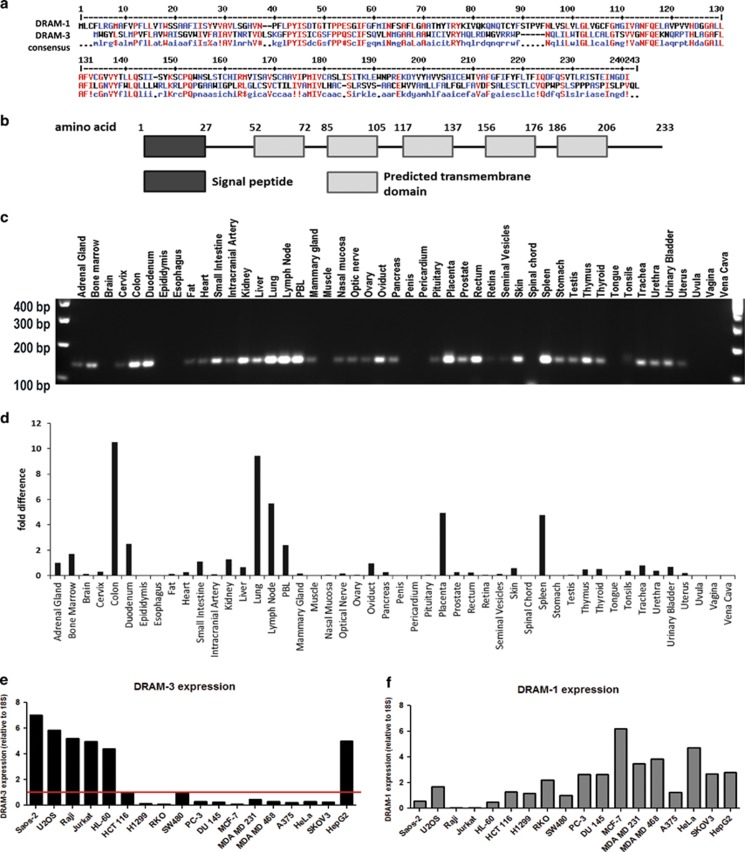Figure 1.
DRAM-3 is expressed in various human tissues and cancer cell lines. (a) Alignment of DRAM-3 and DRAM-1. DRAM-3 shares 30% identity and 43% similarity with DRAM-1 at the amino-acid level. (b) Schematic representation of DRAM-3. DRAM-3 is predicted to encode for a 233-aa protein with six putative transmembrane domains and a predicted N-terminal signal peptide. (c) DRAM-3 mRNA expression varies in different body tissues. qRT-PCR products of the Origene TissueScan Human Normal cDNA Array using Origene primers against DRAM-3 on a 2% agarose gel. (d) Quantification of qRT-PCR from (c). GAPDH was used as a standard. (e) DRAM-3 mRNA expression in a panel of cancer cell lines. Results obtained through qRT-PCR. All values were measured in triplicates and normalized to 18S RNA. The red line denotes the detection limit of the qRT-PCR. (f) DRAM-1 mRNA expression in a panel of cancer cell lines. Results obtained through qRT-PCR. All values were measured in triplicates and normalized to 18S RNA. All values shown were above the detection limit

